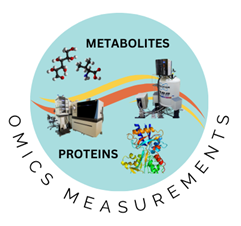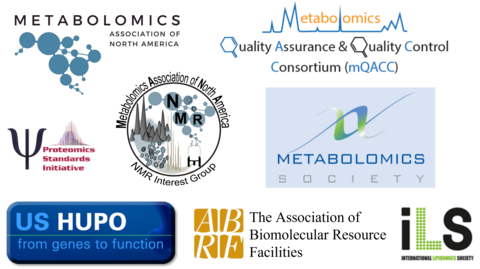Omics Measurements

The Proteomics and Metabolomics Team in the Biochemical and Exposure Science Group is dedicated to identifying and overcoming measurement challenges in the fields of metabolomics and proteomics, which comprehensively identify and measure the thousands of biomolecules in a biological system. They utilize nuclear magnetic resonance (NMR) and mass spectrometry (MS) to create measurement solutions that enable high-quality data generation and accelerate stakeholder adoption of new technologies and practices, ultimately improving measurement harmonization.
Products and Services
The group provides the metabolomics and proteomics community with metrological tools, such as Reference Materials (RMs) and data that promote quality assurance and quality control for emerging technologies. The quantitative and qualitative RMs produced by the group provide metabolomics researchers, commercial metabolomics service providers, and instrument vendors with trustworthy materials to:
- facilitate reproducibility, comparability, and harmonization of measurements within and between laboratories, measurement platforms, and large, multi-cohort and multi-laboratory studies
- benchmark system performance
- support the development of new technology, software, and measurement protocols
- offer training tools for analyst competency
Linking data directly to a stable homogeneous material facilitates the development of quality control metrics for identification, bioinformatics, and systematic workflow evaluation.
Programs and Activities
NIST promotes best practices in metabolomics and proteomics to expand technological capabilities. Our work extends broadly to multiple scientific sectors and is further described in the following programs/projects/activities.
- Metabolomics Quality Assurance and Quality Control Materials (MetQual) Program The NIST MetQual Program demonstrates and improves the comparability of metabolomics measurements for industry, government, and academic laboratories through the use of NIST Reference Materials and Data.
- Molecular Innovation in Agriculture NIST is developing best practices to investigate the protein and metabolite molecular markers of complex infectious agent-vector-plant problems that plague agricultural sectors across the US. These novel solutions will provide security to our economy, resilience against existing and emerging diseases, and long-term production sustainability.
- Omics Technology to Advance Aquaculture NIST is utilizing state-of-the-art omics technology to enhance the science of aquaculture, leading to faster industry growth. The focus is on using and developing measurement technologies to answer crucial questions related to aquaculture production, ranging from fish nutrition and health to reproduction.
- Single-Cell Omics The new NIST CHO cell line expressing NIST mAb has created an opportunity to create the first-of-its-kind single-cell omics standard. NIST is working to characterize the material at the protein level and validate its potential use as a single-cell QC material to enhance manufacturing development and fundamental research.
- Applications in Metabolomics NIST has a well-established metabolomics program supported by state-of-the-art analytical facilities that include a high-field nuclear magnetic (NMR) facility and a high-resolution mass spectrometry (HRMS) laboratory. Projects include investigating the biochemistry of non-model organisms to gain new insights into complex systems, offering critical measurement tools for biomanufacturing, biomedicine, and exposure science.
- Steroid Hormone Suite Analysis Steroid hormones are small metabolites that occur in ppt and ppm concentrations, are structurally highly similar, and are synthesized and excreted in different combinations by different tissues. These properties make accurate identification and measurement of steroid hormones difficult and necessary. NIST develops reference materials and steroid hormone suite analyses using HRMS and tandem MS to improve understanding and diagnosis of endocrine health and disease.
- Comparative Mammalian Proteome Aggregator Resource (CoMPARe) Program NIST is developing a resource for researchers to mine high-quality proteomic data from phylogenetically diverse species. This resource assists in uncovering the molecular roots of beneficial biological adaptations which can be used to drive human biomedical breakthroughs.
Outreach and Affiliations


